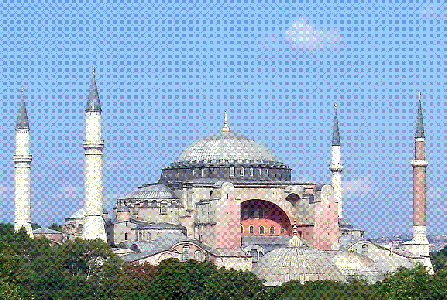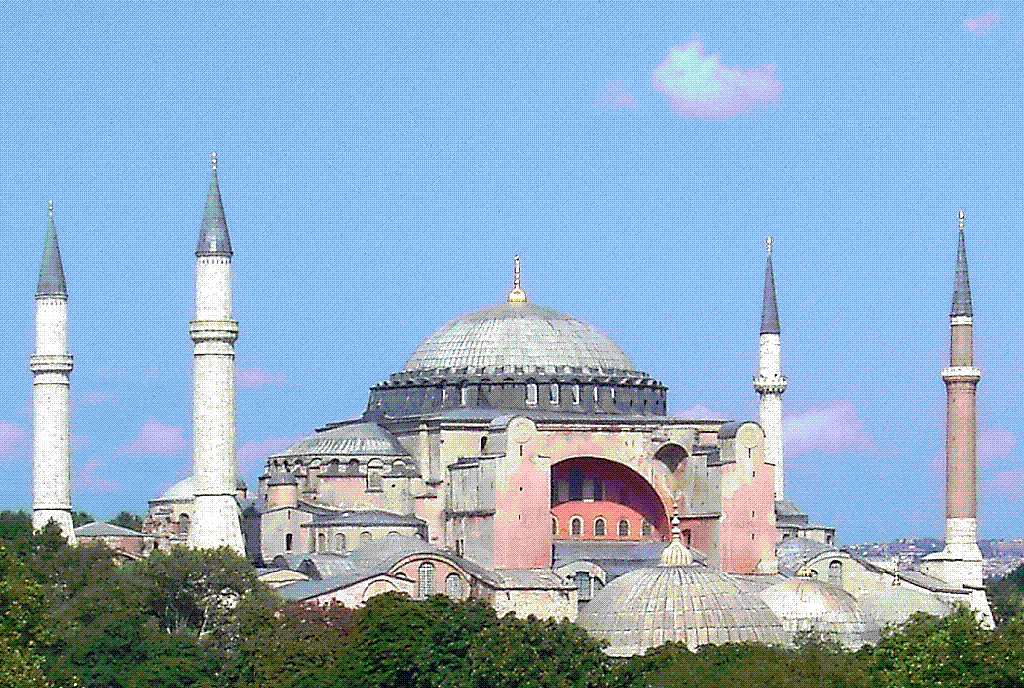Kenneth W. Harl
Tulane University
Ph.D., Yale University
Kenneth W. Harl is Professor of Classical and Byzantine History at Tulane University in New Orleans, where he has been teaching since 1978. He earned his Bachelor’s degree from Trinity College and went on to earn his Master’s and Ph.D. from Yale University.
Dr. Harl specializes in the Mediterranean civilizations of Greece, Rome, Egypt, and Byzantium. He has published numerous articles and is the author of Civic Coins and Civic Politics in the Roman East, A.D. 180-275 and Coinage in the Roman Economy, 300 B.C. to A.D. 700. He is also a veteran field researcher who has served since 1999 on the Editorial Board of the American Journal of Archaeology…
Try this thought experiment: Mentally chart the main phases of European history to 1500.
If you're like most of us, you probably hopscotched from classical Greece through Alexander the Great, from the Rome of the Caesars to the Renaissance, with a detour into the long post-Roman hiatus known as the Dark and Middle Ages.
But this storyline is woefully incomplete, even misleading.
Why? It leaves out Byzantium.
And you're not alone. The mental charts drawn by most educated people would show the same gap.
As Professor Kenneth Harl notes:
"Far from being merely the eastern rump of the old Roman Empire, Byzantium was without a doubt the greatest state in Christendom through much of the Middle Ages.
"This story is far more important than any number of tales of palace intrigue, and is not as well known as it deserves to be.
"These lectures are a small attempt to help redress the balance."
Curious and Even Unsettling Civilization
The civilization of East Rome, or Byzantium, is seldom studied on its own merits because this seemingly remote world is a curious, even unsettling, mix of the classical and medieval.
Byzantine arts and letters, deeply steeped in traditional orthodoxy, seldom appeal to the modern Westerner, a product of the Enlightenment and the changes wrought by modernization. And the same can be said for Muslims, as well, whose own civilization owes much to Byzantium.
These lectures by Professor Kenneth W. Harl are designed to fill that gap. You come away with a widened perspective on everything from the decline of imperial Rome to the rise of the Renaissance.
Professor Harl's tellingly detailed lectures show how the Greek-speaking empire of Byzantium, or East Rome, occupied a crucial place in both time and space that began with Constantine the Great and endured for more than a millennium.
A Crux of Civilizations
You can take the word "crucial" literally.
Centered on its magnificent fortified capital at the lucrative crossroads of Europe and Asia, Byzantium was a crux of civilizations.
It was a colossus that bestrode two continents: a crucible where peoples, cultures, and ideas met and melded to create a world at once Eastern and Western, Greek and Latin, classical and Christian.
It was truly a fulcrum of world history.
A Grandeur That Still Awes
Byzantium's spiritual grandeur and mystical vision of humanity, God, and the cosmos can still be glimpsed. You can see them in:
the awesome, soaring dome of the Hagia Sophia, 100 feet across and tall enough to hold a 17-story building, still the greatest domed building in Istanbul and the model for the great domed churches of the empire
the luminous mosaics of San Vitale at Ravenna, Italy
countless Orthodox churches on several continents.
For century after century, the Byzantines kept alive Hellenic arts and letters and Roman legal-political achievements over a vast arena of space and time.
The influence of this grand Orthodox Christian state was felt in Russia and southeastern Europe and throughout the Islamic world. And it influenced the Italian Renaissance, as well.
Renaissance scholars would name this powerful and brilliant civilization "Byzantium" after the ancient town that occupied the strategic spot where Constantine built his new capital.
The Byzantines called themselves simply hoi Romaioi—Greek for "the Romans."
An Empire of Accomplishment
A list of the achievements of Byzantium's emperors, patriarchs, priests, monks, artists, architects, scholars, soldiers, and officials would have to include:
actively preserving and extending the literary, intellectual, and aesthetic legacy of Classical and Hellenistic Greece (the Byzantine patriarch Photius was doing serious Platonic scholarship at a time when only three of Plato's dialogues were even known in the Latin West)
carrying forward pathbreaking Roman accomplishments not only in law and politics but in engineering, architecture, urban design, and military affairs—at a time when these had mostly been forgotten in the West
deepening and articulating Christian thought and belief through church councils and the work of brilliant theologians such as St. Basil the Great, St. John Chrysostom, and St. Gregory of Nazienzus while spreading the faith to Russia and the rest of what would become the Orthodox world
developing the Christian monastic institutions whose eventual diffusion from the deserts of Egypt to the shores of the Irish Sea would help to sustain faith and learning through centuries of hardship and peril
shielding the comparatively weak and politically fragmented lands of western Europe from the full force of eastern nomadic and Islamic invasions
fusing classical, Christian, and eastern influences to create an art and culture of stunning beauty and splendor
helping to shape the course of the humanist revival and the Renaissance in Western Europe through the writings of the Greek Fathers of the church, the preservation of classical texts, and the example of church mosaics and the work of El Greco.
Three Chapters of the Byzantine Story
To tell this pivotal story, Professor Harl has divided his lectures into three conceptual phases.
Lectures 1 to 12 provide you with essential background as they explain how the Roman world slowly gave way to distinct new blended cultures in the Latin, Celtic, and Germanic north and west, the Greek-speaking east (Byzantium), and later the Islamic south and east from Morocco to India.
You learn how the later Roman Empire under the forceful soldier-emperor Diocletian (r. 284-305) responded to political and military crises, setting the stage for Constantine (r. 306-337), whose conversion to Christianity would point the Roman world in new directions.
You also meet the amazing emperor Justinian (r. 527-565).
This brilliant visionary built the Hagia Sophia, sponsored the magnificent codification of Roman law that bears his name, and sought to restore the entire Mediterranean world to his vision of a Christian and Constantinian empire.
But even the brilliant generalship of Belisarius and Narses could not make Justinian's policies a success. In the end came fresh crises that ended the classical world forever.
Lectures 13 to 21 deal with the achievements of medieval Byzantium, familiar to poets and novelists.
Its emperors warded off new invaders, checked the power of Islam, and directed a transformation of government, society, and culture.
The Byzantine State went through downs and ups of crisis and recovery, the latter sometimes directed by remarkable emperors like Alexius I Comnenus and the dynasty he sired (r. 1081-1185).
But the pressures from the Seljuk Turks and others were relentless and eventually triggered the Byzantine cry for help that led to the First Crusade (1095-99).
Lectures 22 to 24 run from the Fourth Crusade's horrifying sack of Constantinople (1204) to the Ottoman triumph of 1453. They tell a tale of political decline but enduring cultural and spiritual achievement.
Each in its own way, the Italian quattrocento and the Orthodox realm of Russia and Eastern Europe emerged as a legatee of Byzantium's mind and spirit.
Indeed, even the Ottoman sultans, creators of the last great Islamic empire, owed a huge debt to their vanquished foes.
http://d01.megashares.com/?d01=e3b5203
My other posts
http://www.avaxhome.ws/ebooks/alexander_the_great_and_the_hellenistic_age_jeremy_mcinerney.html
http://www.avaxhome.ws/ebooks/english/god_and_mankind_comparitive_religions_robert_oden.html
http://www.avaxhome.ws/ebooks/english/augustine_philosopher_and_saint_phillip_cary.html
http://www.avaxhome.ws/ebooks/bonnie_wheeler_medieval_heroines_audio.html
http://www.avaxhome.ws/ebooks/brad_gregory_history_of_christianity_in_the_reformation_era.html
http://www.avaxhome.ws/ebooks/elizabeth_vandiver_classical_mythology.html
http://www.avaxhome.ws/ebooks/english/from_plato_to_post_modernism_louis_markos.html
http://www.avaxhome.ws/ebooks/english/luke_timothy_johnson_jesus_and_the_gospels.html
http://www.avaxhome.ws/ebooks/kenneth_harl_the_era_of_the_crusades.html
http://www.avaxhome.ws/ebooks/english/great_world_religions_islam_john_esposito.html
http://www.avaxhome.ws/ebooks/other_1492_ferdinand_isabella_and_the_making_of_an_empire.html
http://www.avaxhome.ws/ebooks/english/thomas_noble_foundations_of_western_civilization.html
http://www.avaxhome.ws/ebooks/english/phillip_cary_luther_gospel_law_and_reformation.html
http://www.avaxhome.ws/ebooks/the_apostle_paul_luke_timothy_johnson.html
Going next:
After the New Testament - The Writings of the Apostolic Fathers
Discovery of Ancient Civilizations - Brian Fagan
Govind Sreenivasan - Europe And The Wars Of Religion
Great Ancient Civilizations Of Asia Minor - Kenneth Harl
Great Figures of the Old Testament Amy-Jill Levine
Great World Religions - Christianity Robert Oden
History of Ancient Egypt - Bob Brier
History Of Science - Antiquity To 1700 - Lawrence Principe
King Arthur And Chivalry Bonnie Wheeler
Louis Markos The Life and Writings of CS Lewis
Michael Sugrue - Plato, Socrates, and the Dialogues
Philosophy and Religion in the West - Phillip Cary
The Bible and Western Culture
The Terror of History - Mystics, Heretics, and Witches in the Western Tradition
Ancient Near Eastern Mythology - Shalom Goldman
Rome and The Barbarians - Kenneth W. Harl
Practical Philosophy - Greco-Roman Moralists
History Of Ancient Rome Garrett G Fagan
Great.World.Religions-Judaism.-.Isaiah.M.Gafni
James Hall - Philosophy Of Religion
Bob Brier - Great Pharaohs Of Ancient Egypt
Plato's Republic - David Roochnik
Americas Religious History - Patrick N Allitt
Patrick Allitt - Victorian Britain
David Roochnik - Introduction To Greek Philosophy
The High Middle Ages - Professor Philip Daileadeк
Kenneth Bartlett - Italian Renaissance
Jeremy Adams - Thomas Aquinas, The Angelic Doctor
History of England from the Tudors to the Stuarts - Robert Bucholz
William Cook - Francis of Assisi
Philip Daileader - The Early Middle Ages
Gary W Gallagher - American Civil War
History of the United States Part 1,2,3 Allen C. Guelzo
Teofilo Ruiz - Medieval Europe
History of Russia - From Peter the Great to Gorbachev - Mark Steinberg
The Odyssey Of Homer - Professor Elizabeth Vandiver
The Iliad Of Homer - Professor Elizabeth Vandiver
Herodotus, The Father Of History - Elizabeth Vandiver



